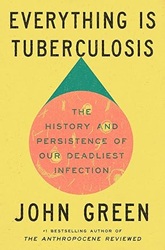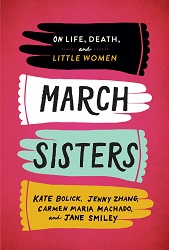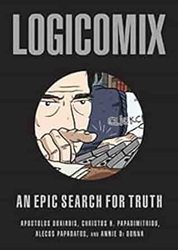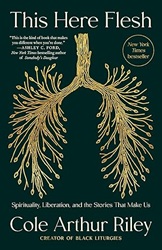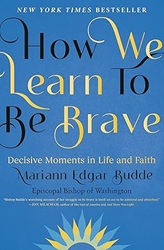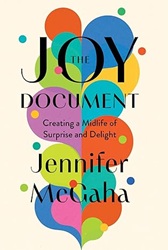Review of Everything Is Tuberculosis, by John Green
The History and Persistence of Our Deadliest Infection
by John Green
Crash Course Books (Penguin Random House), 2025. 198 pages.
Review written June 9, 2025, from a library book.
Starred Review
I am a fan of John Green’s turning to writing nonfiction. He thinks long and hard about so many aspects of his topic. The catch is that it’s hard to decide where to put this review. History? It’s full of that, but I put most adult History nonfiction in “True Stories” – which it also has. Musings? There’s plenty of thinking about what tuberculosis means to us humans and how things got that way. But I think I’ll settle for “Current Issues” – because ultimately the whole book shows us that we can choose to fight tuberculosis – or let it mutate and get more drug resistant and increase the number of people it kills every year.
I was a little bit familiar with the problem of drug-resistant tuberculosis spreading in poor communities because of having read Tracy Kidder’s Mountains Beyond Mountains, an amazing book that John Green refers to multiple times. This book is in that tradition – but honestly more readable and digestible. My theory is that John Green being a young adult novelist first is how that happened. The result is a compelling history of tuberculosis and humans’ relationship with it in a book that never lags.
John Green goes back in history – tuberculosis has plagued humans for thousands of years and has killed more people than any other disease – and shows us how attitudes toward the disease have changed, and tells us about the quest for a cure. Along the way, he interweaves the story of Henry, a teen in Sierra Leone who had been suffering from tuberculosis for years.
And yes, the story of tuberculosis is the story of prejudice. In years before the cure, many believed that non-white people didn’t get tuberculosis.
In Europe and the U.S., most white doctors believed that phthisis – as it was inherited by those with great sensitivity and intelligence – could only affect white people, and it was sometimes known as “The White Man’s Plague.” One American doctor, for instance, called it, “a disease of the master race not of the slave race.”. . .
Acknowledging that consumption was common among enslaved, colonized, and marginalized people would have undermined not just a theory of disease, but also the project of colonialism itself.
Now, though, tuberculosis is much more of a problem where there is poverty. Inflated drug prices keep poorer countries from using the most effective medication – which results in more drug resistant strains of tuberculosis, and may one day be everyone’s undoing.
My summary, though, isn’t nearly as interesting as John Green’s narratives, showing how everything is interrelated, and how tuberculosis has affected every aspect of human civilization. In the present, millions still die from tuberculosis every year – even though we have effective cures. This book explores all the sides of why that happens and gives us ideas for helping to stop it and eradicate TB once and for all.
johngreenbooks.com
tbfighters.org
youtube.com/@Tuberculosis-l1jSurvivorHenry
Find this review on Sonderbooks at: www.sonderbooks.com/Nonfiction/everything_is_tuberculosis.html
Disclosure: I am an Amazon Affiliate, and will earn a small percentage if you order a book on Amazon after clicking through from my site.
Disclaimer: I am a professional librarian, but the views expressed are solely my own, and in no way represent the official views of my employer or of any committee or group of which I am part.
What did you think of this book?
